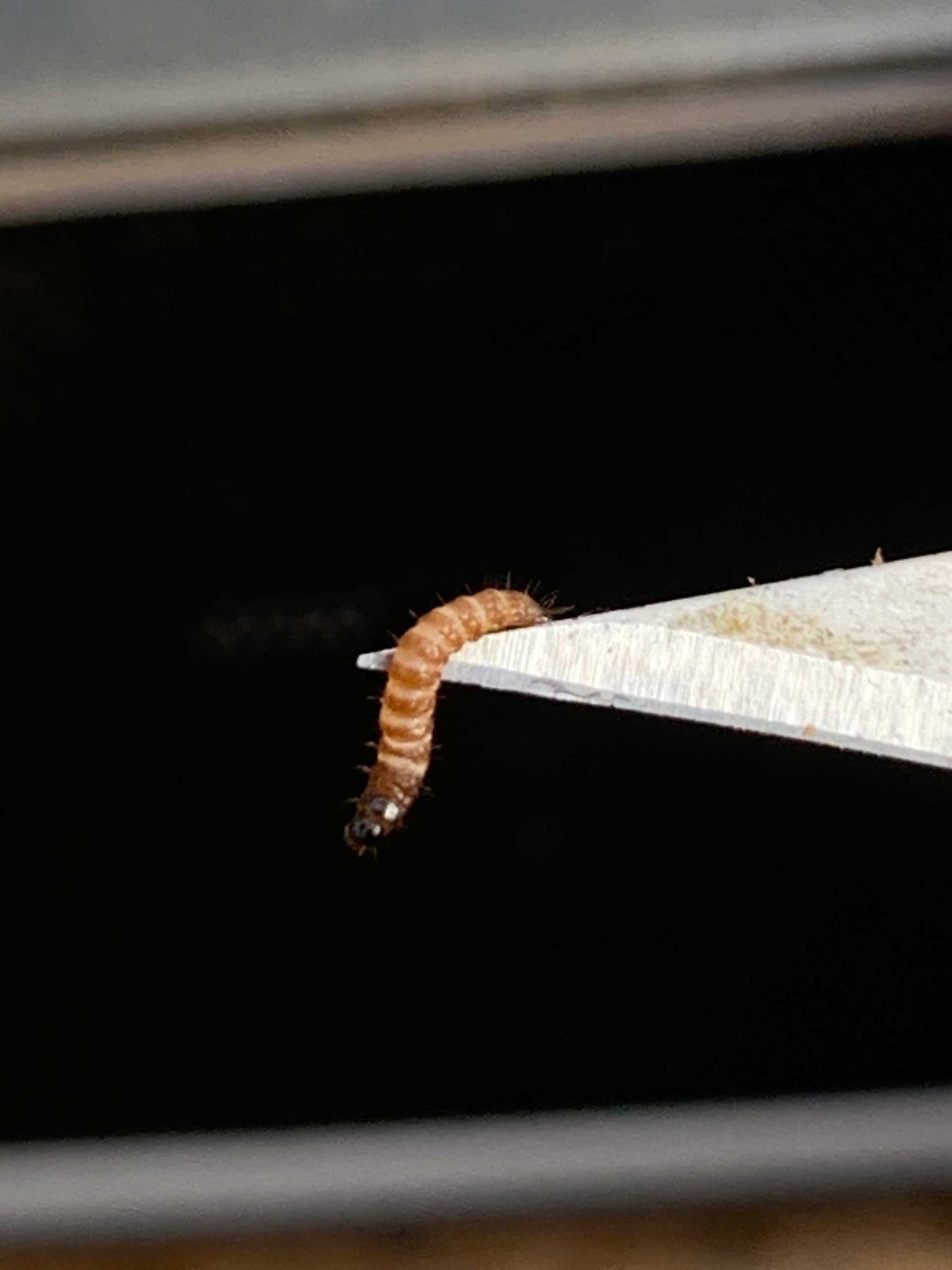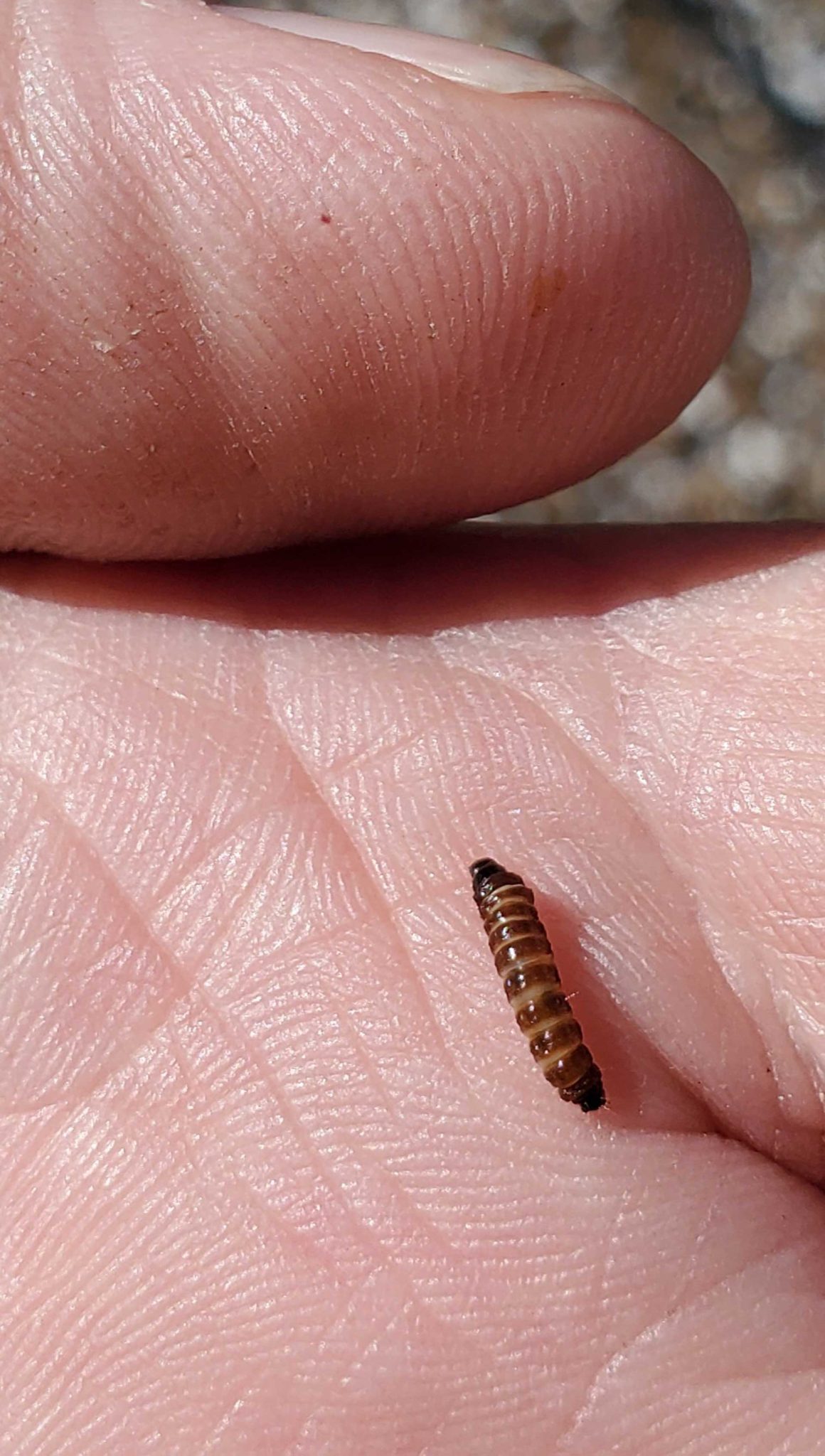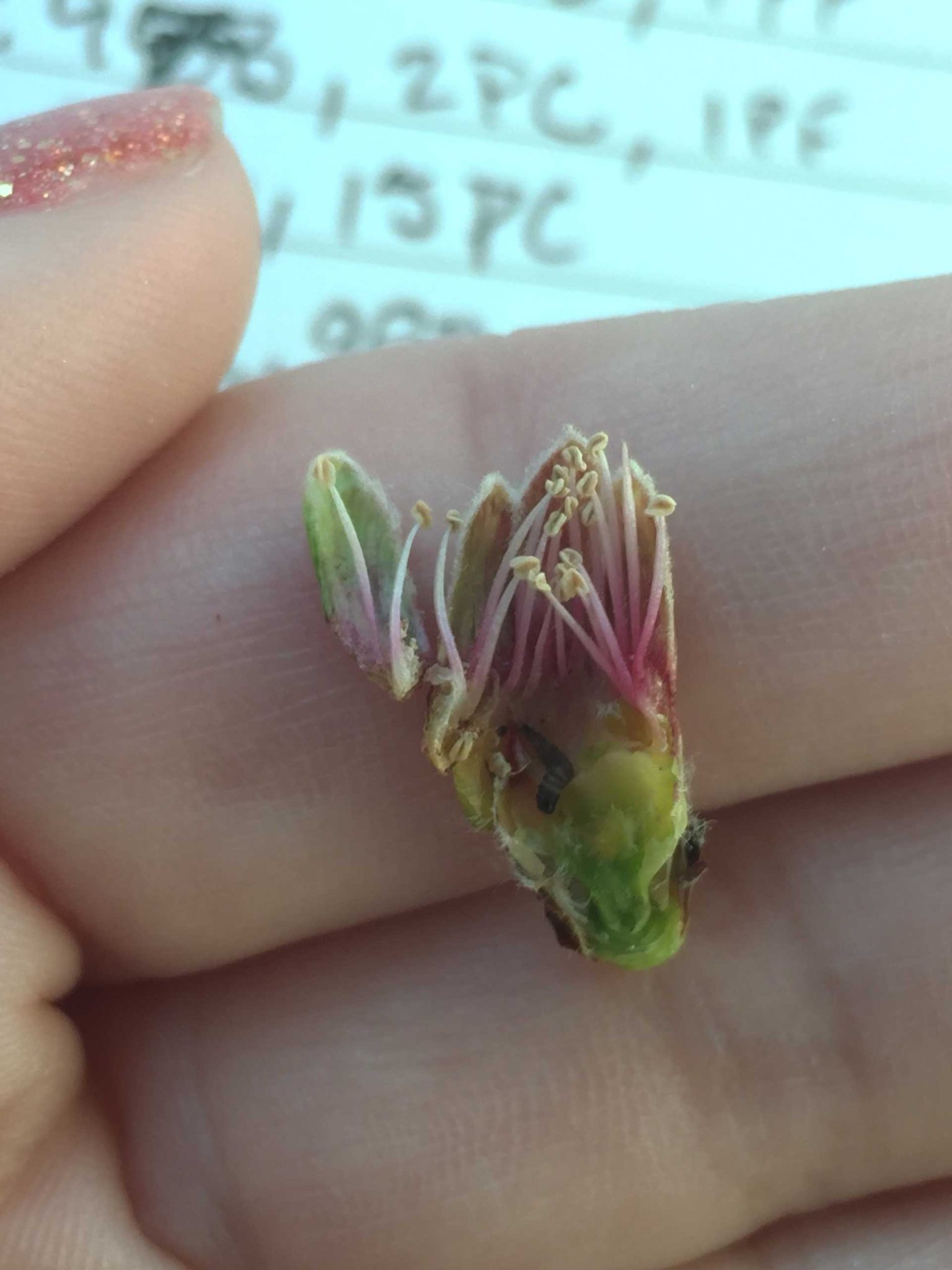
With most insect pest control attention in tree nut orchards now directed at navel orangeworm, it is possible that a previous almond pest can come creeping back into orchards.
That could become the case with peach twig borer (PTB), warned Emily Symmes, senior technical field manager for Suterra.
“Statewide, peach twig borer is not the concern it once was. We don’t see many in mature nut trees now, but if it infests young orchards, this pest can negatively impact tree development,” Symmes said.
The almond industry’s shift away from dormant insecticide spray applications, elimination or reduced ‘May’ sprays for NOW control and increased adoption of mating disruption for NOW can present an opening for PTB, once held in check by those applications.
CCA Justin Nay with Integral Ag said that as control chemistries and timings change in the future, almond growers could see larger PTB populations and damage in some years.
“They can cause serious structural damage on second-leaf trees that are being pruned to three primary scaffolds,” Nay said.

PTB an Old Foe
Peach twig borer (Anarsia lineatella) was first reported in California in the 1880s. Until navel orangeworm became the primary insect pest in almonds, peach twig borer was considered to be the worst pest in almonds, damaging new shoots, killing terminal growth and feeding on almond kernels.
Larvae of PTB overwinter inside tree bark cracks, in the crotches of one- to three-year-old wood and in pruning wounds. According to UC Integrated Pest Management guidelines, PTB larvae emerge around bloom and migrate up the twigs and branches, tunneling inside branches and killing the terminal shoot. Nay said the adult PTB moths are cryptic and look like bark or spur and are rarely seen in the orchard except in traps with lures for male PTB.
This pest has four generations per year. Peach twig borer adults begin to emerge in late March to early April. The moths are gray and a quarter- to half-inch in length. The adults lay eggs on twigs during May and June. Larvae hatch from those eggs in 4 to 18 days and will be the second flight of moths in late June and early July. The second-generation moths repeat the cycle, causing shoot and kernel damage and producing another generation.
Almonds become more susceptible to PTB damage near harvest. Nay said PTB likes to lay eggs at nonpareil hull split and feed in the hull. They may also make their way to the kernels. For most almond varieties with decent shell seal, they rarely get into the kernels, but in some years can be numerous in the hull. Nay added that PTB rarely pupate in the nuts and a single larva can damage more than one nut.
Feeding by PTB also makes kernels more attractive as feeding sites to NOW. Nay said in an average year, damage from PTB is usually less than 0.25% of harvest grades statewide, but every so often, the damage jumps to 1% or 2% and catches many growers off-guard, even when they are monitoring for the pest throughout the season.
“On a high year, it is just one more thing that adds to the inedible on the grower’s grade sheet,” Nay said.
Almond cultivars differ in susceptibility to kernel damage with Merced and Thompson the most susceptible. Nonpareil, Fritz, Price and Ne Plus Ultra follow in susceptibility.
The primary issue with an infestation of PTB is the potential for damage to young trees. First-leaf orchards can lose terminal shoots and experience growth delay. Canopy growth can be impacted and scaffold selection in the first dormant season can be difficult.
Shoots that have been mined by peach twig borer or oriental fruit moth larvae can cause the affected portion of the twig to wilt, a symptom known as “flagging” or a “shoot strike.” Severe PTB feeding can mimic the appearance of non-infectious bud failure because so many bud positions are eaten, failing to produce new shoots.

Monitoring and Management
Symmes said growers or orchard managers should be on the lookout in the spring for shoot strikes to determine if young trees are infested with PTB. Monitoring for PTB should begin in mid-April. When shoot strikes are observed, they should be cut down and sliced open to look for PTB larvae. PTB larvae are light brown with a black head and prothorax when they first hatch. The head and prothorax remain black as the larvae grow, but the body turns chocolate brown, and white coloration between each body segment gives the appearance of bands. Oriental fruit moth larvae may also be observed inside the sliced shoots. They are white or pink with a brown head.
Finding four or more shoot strikes per tree in a mature orchard is an indication that a control action should be considered. Harvest samples should also be checked for PTB damage.
Pheromone traps placed in orchards will catch a lot of PTB moths, Symmes said, so they alone are not a useful measure of PTB pressure.
The UCCE publication Sacramento Valley Orchard Source notes that the May spray timing for PTB can adequately protect developing primary scaffolds on new trees from shoot strikes. Protecting new shoot growth on new trees in early spring is worth the investment. Shoot strikes occurring at other times on vigorous nonbearing trees does not set trees back or warrant control.
The UC IPM Guidelines offer three different management options or PTB throughout the growing season. Dormant-season applications can be made to kill larvae overwintering in the hibernaculum, bloom time sprays can be made to kill the larvae with insecticides that do not target bees, and May spray timing can be made to kill adult moths and their first generation of larvae and eggs.
Applications of either Spinetoram (Delegate), Chlorantraniliprole (Altacor), Flubendiamide (Belt), Methoxyfenozide (Intrepid), Spinosad (Entrust, Success), Phosmet (Imidan), Esfenvalerate (Asana XL) and Bacillus thuringiensis (BT) can be made to target moths, larvae and eggs. Bt provides an organic option for PTB control.
For biological control, the California gray ant, Formica aerata, is one of the most effective predators of peach twig borer in the Central Valley. Ants feed on larvae found within the tree.
Developing a strategy for PTB control depends on an orchard environment, level of pressure, timing of other sprays and the need to control other insect pests. The dormant timing should be considered if another spray application is planned (e.g., scale treatment). UC IPM Guidelines report that applying a tank mix of fungicides and PTB-specific insecticides at bloom can be effective.

Cecilia Parsons
Cecilia Parsons has spent the past 30 years covering agriculture in California for a variety of newspapers, magazines and organizations. During that time she has been fortunate to witness some of the important events that have shaped this diverse industry and worked hard to examine and explain these events for readers.
When Cecilia first moved to the San Joaquin Valley in 1976, her first journalism job was at a small daily newspaper where she covered “farm news.” From there she branched out to writing for a dairy magazine and a regional weekly agriculture publication.
Cecilia is part of a farming family from the rural community of Ducor where she also raises purebred sheep and is attempting to master versatility ranch horse riding.










